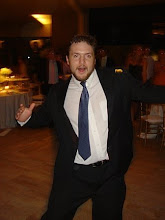Familiar territory does not mean home. Home, to me, would be jogging down the valley path past the Babooters's house and the old fire-ravaged barn into The Valley, down the massive straightwaway between the Christmas tree farm aisles and to the shore of the mighty Chagrin. I've always considered the Chagrin River to be the most aptly named body of water in all the planet; should I attach a descriptive noun to the city of Cleveland, that noun would be adversity, and the resulting effect upon the populace would be chagrin. An overarching sadness, I think, follows the waters of the Chagrin, which sometimes flows like a real river, and other times barely resembles a creek. Small pools would form along the shoreline, breeding tadpoles, crayfish, and all manner of minnow, a perfect place for a young boy to learn how to kill waterborne creatures by removing them from their habitat.
I once fed some tadpoles I'd gathered to a pet turtle I'd purchased from a local pet store during the Teenage Mutant Ninja Turtle rage; it died, as did the tadpoles, in different fashions. Its name was Botticelli. I didn't name the tadpoles.
At a particular spot accessible from the shoreline ridge was an unusually large rock in the middle of the river, splitting the current. My father speculated that there was a fishing hole behind it, and that the perfect cast would yield excellent results. I believed him. We called this rock Popeye Rock. It, of course, had grown so big and strong because it had eaten its spinach as a child-rock.
I used to fish those waters, never catching anything worth discussing. Chagrin river fishermen claimed trout and bass from other adjacent locales, but most of what I gathered were suckers. I will continue to fish them, as often as I can, despite it all.
Harlem is where I live. But it's not mine. This minor revelation occurred to me as I muscled my way down the Fifth Avenue corridor through the lower hundred streets of the neighborhood commonly referred to as Harlem. The spectators on the Manhattan side of the Third Avenue Bridge gathered on the streetsides, oblivious of the sidewalks and curbs, bottlenecking the runners into a tighly-packed mid-roadway vein that reminded me of the initial stages in Brooklyn in which I'd been running strong and loose amongst runners, not watchers. My phone buzzed at me once from my armband, alerting me to an incoming call, and I realized that it was likely that Liz and Tim and whomever else had probably finished by then while I struggled at Mile 22. I declined to remove the phone from its holster. I was busy.
Roughly ten minutes later, I wasn't so busy. I had been walking, briefly, I hope, struggling with another series of muscle-locks, trying desperately to push forward. My buddy Jamie was calling and this time I decided to answer. I couldn't hear him, but I shouted my coordinates into the phone, trying to alert my friends that yes, I was still running, and yes, I will finish sometime this year. I clicked off the phone, re-holstered it into my armband, and began plodding forward again.
Suddenly, hindsightedly instantaneously, the most interminable memory moment I can recall, we were at the park. Not in the park- just 110th Street, the north end, with the 4:45 crew. Clocks were stationed at every mile marker, alerting us to elapsed time, and I knew that 5 hours was going to be more of a struggle than I'd hoped. Fifth Avenue at this stage is a long gradual upward incline and a thoroughly demoralizing experience. I tried to find a stride and failed- my legs were nearly useless. At Mile 23 I tried stretching again, outside the Met, and felt the familiar(from ten years prior, as a football player) burn of a muscle about to tear as I attempted to loosen the threadbare structures of my wearied frame.
Not now. Goddammit, not now.
There would be no more stretching.
I ran on the left side of Fifth for awhile. A spectator held out a homemade-magic-markered sign that read, "There is BEER at the end!" I acknowledged him. Repeatedly. Actually, I stopped and shook his hand. Yes, sir. Yes, I hope so. Yes.
With that magical motivator, I turned into Central Park along with the rest of my fellow runners and nearly crumpled to the ground as my body mustered one last protest against the final two-and-a-half miles of the race. I paused, but not long- stillness would be death- and began long, exaggerated walk-strides along the designated path.
This was my route. I'd run the park no fewer than twenty-five times over the course of training. I knew we weren't really close yet.
I also knew that close is a relative term. Glass... half full?
Home was not so far away.





